
Free Motorcycle Theory Test
You have 57 minutes to answer 50 multiple choice motorcycle theory test questions. You need to score at least 43 out of 50 to pass the test. Answers may be checked after each question by clicking the 'check answer' button or you can wait until the end of the test to review your final score. Best of luck!
Click on an answer to view the correct choice along with the explanation.
B
C
D
Explanation: If you feel your back wheel beginning to skid as you accelerate, ease off the throttle. This will give your rear tyre the chance to grip the road and stop the skid.
B
C
D
Explanation: Carrying extra weight, such as luggage or a pillion passenger, can affect the feel and handling of your motorcycle. If possible, some items may need to be adjusted to help overcome this. These adjustments include the aim of the headlights, the suspension settings, the tyre pressures and the mirrors.
Explanation: In some towns and cities there are special areas reserved for parking motorcycles. Look out for these signs.
Explanation: Every vehicle should have a registration document showing the registered keeper. It's your legal responsibility to make sure all the information is correct. This includes make, model and engine size. If you buy a new vehicle, the dealer will register it with DVLA, who will send the registration document to you.
Explanation: Some helmet straps have a velcro tab in addition to the main fastening, which is intended to secure the strap so that it doesn't flap in the wind. It shouldn't be used on its own to fasten the helmet.
B
C
D
Explanation: Drivers and riders may switch on their hazard warning lights to warn following traffic of an obstruction or danger ahead. This only applies on motorways and dual carriageways that are subject to the national speed limit. The hazard warning lights should be turned off again when it's clear the warning has been seen.
Explanation: Every vehicle on the road has a registration document. This records any change of ownership and gives specific information relating to the vehicle and owner. This includes the date of first registration, the registration number, the make and colour of the vehicle, and the registered keeper's name.
B
C
D
Explanation: Arm signals should be used to confirm your intentions when you aren't sure that your indicators can be seen by other road users. Use the signals shown in The Highway Code and return your hand to the handlebars before you turn.
B
C
D
Explanation: Beware of side winds when riding on exposed stretches of road. Take extra care when overtaking large vehicles. As you pass them, you may emerge from their shelter into a gust of wind that can suddenly blow you off course. Bear in mind that strong winds can affect the stability of other road users too.
Explanation: Try to anticipate slippery road surfaces. Watch out for oil patches at places where vehicles stop for some time, such as bus stops, lay-bys and busy junctions.
B
C
D
Explanation: On busy roundabouts, traffic may be moving very quickly and changing lanes suddenly. You need to be aware of what's happening all around you. Before crossing lanes to the left, make sure you take a lifesaver glance to the left. This gives you time to react if it isn't safe to make the manoeuvre.
Explanation: 'Tailgating' is the term used when a driver or rider follows the vehicle in front too closely. It's dangerous because it restricts their view of the road ahead and leaves no safety margin if the vehicle in front needs to slow down or stop suddenly. Tailgating is often the underlying cause of rear-end collisions or multiple pile-ups.
Explanation: Inconsiderate parking can obstruct the flow of traffic and so make traffic congestion worse. Red routes are designed to prevent this by enforcing strict parking restrictions. Driving slowly in traffic increases fuel consumption and causes a build-up of exhaust fumes.
Explanation: Look well ahead to see whether any hazards are developing. This will give you more time to deal with them in the correct way. The man in the picture is clearly intending to cross the road. You should be travelling at a speed that allows you to check your mirror, slow down and stop in good time. You shouldn't have to brake harshly.
Explanation: If a school crossing patrol steps out into the road with a 'stop' sign, you must stop. Don't wave anyone across the road and don't get impatient or rev your engine.
Explanation: Vehicles that are used to carry children to and from school will be travelling at busy times of the day. If you're following a vehicle with this sign, be prepared for it to make frequent stops. It might pick up or set down passengers in places other than normal bus stops.
B
C
D
Explanation: In windy weather, watch out for motorcyclists and also cyclists, as they can be blown sideways into your path. When you pass them, leave plenty of room and check their position in your mirror before pulling back in.
B
C
D
Explanation: Large vehicles can hide other vehicles that are overtaking - especially motorcycles, which may be filtering past queuing traffic. You need to be aware of the possibility of hidden vehicles and not assume that it's safe to emerge.
B
C
D
Explanation: The presence of street lights generally indicates that there's a 30 mph speed limit, unless signs tell you otherwise.
Explanation: Toucan crossings are similar to pelican crossings but there's no flashing amber phase. Cyclists share the crossing with pedestrians and are allowed to cycle across when the green cycle symbol is shown.
Explanation: When you pass pedestrians in the road, leave plenty of room. You might have to use the right-hand side of the road, so look well ahead, as well as in your mirrors, before pulling out. Take great care if a bend in the road obscures your view ahead.
Explanation: Whatever light is showing, you should know which light is going to appear next and be able to take appropriate action. For example, when amber is showing on its own, you'll know that red will appear next. This should give you ample time to anticipate and respond safely.
B
C
D
Explanation: Check the tyre pressures when the tyres are cold. This will give you a more accurate reading. The heat generated on a long journey will raise the pressure inside the tyre.
B
C
D
Explanation: Cyclists approaching a roundabout in the left-hand lane may be turning right but may not have been able to get into the correct lane due to heavy traffic. They may also feel safer keeping to the left all the way around the roundabout. Be aware of them and give them plenty of room.
Explanation: When traffic lights are out of order, treat the junction as an unmarked crossroads. Be very careful and be prepared to stop; no-one has priority.
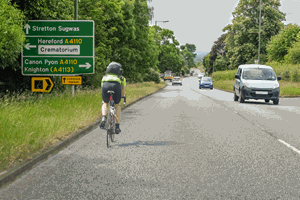
B
C
D
Explanation: Make allowances for cyclists, and give them plenty of room. Don't overtake and then immediately turn left. Be patient and turn behind them when they've passed the junction.
B
C
D
Explanation: Normally you should travel in the left-hand lane and only use the right-hand lane for overtaking or turning right. Move back into the left lane as soon as it's safe but don't cut in across the path of the vehicle you've just passed.
Explanation: Puffin crossings have infra-red sensors that detect when pedestrians are crossing and hold the red traffic signal until the crossing is clear. The use of a sensor means there's no flashing amber phase as there is with a pelican crossing.
Explanation: Buses which carry children to and from school may stop at places other than scheduled bus stops. Be aware that they might pull over at any time to allow children to get on or off. This will normally be when traffic is heavy during rush hour.
B
C
D
Explanation: Never overtake on the left, unless the traffic is moving in queues and the queue on your right is moving more slowly than the one you're in.
B
C
D
Explanation: The national speed limit for a car or motorcycle on a motorway is 70 mph. Lower speed limits may be in force; for example, at roadworks. Variable speed limits also operate in some areas when the motorway is very busy. Cars or motorcycles towing trailers are subject to a lower speed limit.
Explanation: There are some crossings where cycle routes lead cyclists to cross at the same place as pedestrians. These are called toucan crossings. Always look out for cyclists, as they're likely to be approaching faster than pedestrians.
B
C
D
Explanation: If your vehicle is required to have an MOT certificate, you'll need to make sure this is current before you're able to tax your vehicle. You can do this online, by phone or at certain post offices.
B
C
D
Explanation: A casualty suffering from shock may have injuries that aren't immediately obvious. Call the emergency services, then stay with the person in shock, offering reassurance until the experts arrive.
Explanation: The motorcyclist is in an extremely vulnerable position, exposed to further danger from traffic. Approaching vehicles need advance warning in order to slow down and safely take avoiding action or stop. Don't put yourself or anyone else at risk. Use the hazard warning lights on your vehicle to alert other road users to the danger.
Explanation: Before you move off from the side of the road, you should take a final look over your shoulder to check your blind spot. This will help you to see any road user who isn't visible in your mirrors.
Explanation: Keeping the clutch cable oiled will help it to move smoothly through its outer casing. This will extend the life of the cable and help prevent the clutch's operation from becoming stiff.
Explanation: You can cause your motorcycle to skid by heavy braking, as well as excessive acceleration, swerving or changing direction too sharply, and leaning over too far.
B
C
D
Explanation: The lifesaver glance makes you aware of what's happening behind and alongside you before you alter your course. This glance must be timed so that you still have time to react if it isn't safe to carry out your manoeuvre.
B
C
D
Explanation: TCS helps to prevent the rear wheel from spinning, especially when accelerating on a slippery surface.
Explanation: Even though you've left the restricted area, make sure that you park where you won't endanger other road users or cause an obstruction.
Explanation: Don't wait until the last moment before moving into the left-hand lane. Plan ahead and don't rely on other traffic letting you in.
Explanation: Where there's a long, steep, uphill gradient on a motorway, a crawler lane may be provided. This helps the traffic to flow by diverting the slower heavy vehicles into a dedicated lane on the left.
Explanation: You might see this sign where traffic lights are out of order. Proceed with caution, as nobody has priority at the junction.
B
C
D
Explanation: Cyclists approaching a roundabout in the left-hand lane may be turning right but may not have been able to get into the correct lane due to heavy traffic. They may also feel safer keeping to the left all the way around the roundabout. Be aware of them and give them plenty of room.
B
C
D
Explanation: At crossroads, traffic normally turns offside to offside. This is the safest way to turn, but sometimes the layout or road markings indicate drivers should pass nearside to nearside. Take extra care at these crossroads because, as you turn, your view ahead will be obscured by the oncoming vehicle crossing in front of you.
B
C
D
Explanation: If you accumulate six or more penalty points within two years of gaining your first full licence, it will be revoked. The six or more points include any gained due to offences you committed before passing your test. If this happens, you may only drive as a learner until you pass both the theory and practical tests again.
Explanation: Be particularly careful when approaching horse riders - slow down and be prepared to stop. Always pass wide and slowly, and look out for signals given by the riders. Horses are unpredictable: always treat them as potential hazards and take great care when passing them.
B
C
D
Explanation: It can be frustrating and worrying to find your planned route is blocked by roadworks or diversions. If you've planned an alternative, you'll feel less stressed and more able to concentrate fully on your driving or riding. If your original route is mostly on motorways, it's a good idea to plan an alternative using non-motorway roads. Always carry a map with you just in case you need to refer to it.
Explanation: Look well ahead and be ready to stop for any pedestrians crossing, or about to cross, the road. Also check the pavements for anyone who looks like they might step or run into the road.
Motorcycle Theory Test Practice
Motorcycle Theory Test Questions by Topic
Motorcycle Theory Test Case Studies
About the Motorcycle Theory Test
Contents
- A multiple-choice exam – You have to answer at least 43 out of 50 questions correctly in this section to pass. It will be carried out on a touch-screen computer.
- A video-clip-based hazard perception test – You will be asked to identify road hazards shown in 14 video clips, using a mouse.
The practical test also consists of two primary elements:
- A set of off-road exercises
- An observed ride based on the road – This also includes an eyesight test and several questions on vehicle safety checks and carrying a pillion passenger.
It is only after you have passed your motorcycle theory test that you will be able to book a practical test. This must be done within two years of passing your motorcycle theory test. The Driving and Vehicle Standards Agency (DSA) are responsible for administering these tests.
Motorcycle Theory Test Booking
The motorcycle theory test currently costs £23.
You’re able to book your theory test via:
- Telephone
- Post
- Online
Test sessions are usually available during the day and in the evenings from Monday to Saturday. Remember, if you have to cancel your motorcycle theory test appointment, you must provide at least a three working day notice. Failure to do so will result in the loss of your theory test fee.
You must also inform the DVSA of any hearing difficulties, dyslexia, or light-sensitive epilepsy. In Northern Ireland driving tests follow the same layout, but are instead administered by the DVA (Driver and Vehicle Agency).
What you should take with you
At the theory test centre, you will be required to present:
- Photocard driving licence – If this is of an older style, you will also require a passport copy.
Failure to bring this will result in the forfeiture of both your test and fee.
Please make sure you arrive on time for your motorcycle theory test. Don’t forget to set a reminder on your mobile device and/or calendar to ensure you don’t forget.
Multiple-choice Test
In order to pass the multiple-choice exam section of the motorcycle theory test (questions and answers), you will need to answer at least 43 out of 50 of the questions correctly within the 57 minutes you have for the exam. Please note that when you are booking your test, if you are a candidate with special requirements, you are able to apply for extra time.
Like the driving theory test, each question will have four possible answers with one being correct. You will touch the screen beside the answer you wish to choose in order to select the answer you think is correct. There will be a practice question prior to the beginning of the test so you can practice this.
Some questions will be presented as a case study. These questions will be based on a real-life scenario that you may experience whilst riding. There will be 5 questions per case study.
If you have selected the wrong answer, you can touch the screen again in order to change your selection. Marking a question with a flag will allow you to revisit the question at a later stage. The system will prompt you to revisit any unanswered questions.
You will be given a three-minute break after the multiple-choice test before advancing to the motorcycle hazard perception test.
How to prepare for the multiple-choice test
The 50 questions that make up the multiple-choice part of the motorcycle theory test will be similar to those that are included in the mock tests on this website. Consider signing up for an account and practice these theory mock tests to prepare for the multiple-choice section of the theory test. We also have mock tests covering the 14 motorcycle theory test categories. These are:
- Alertness
- Attitude
- Documents
- Hazard Awareness
- Incidents, Accidents and Emergencies
- Motorcycle Handling
- Motorcycle Loading
- Motorway Rules
- Other Types of Vehicle
- Road and Traffic Signs
- Rules of the Road
- Safety and Your Motorcycle
- Safety Margins
- Vulnerable Road Users
This should be very useful as a practice for the multiple-choice part of the test and should be sufficient preparation for you to pass.
Motorcycle Hazard Perception Test
The motorcycle hazard perception test will consist of 14 videos, each about a minute in length, that demonstrate road situations that involve other users of the road. As soon as you notice a developing hazard i.e something that forces you to change your speed or direction, click your mouse. You will be scored higher the earlier you spot and respond to a potential danger. A red flag will appear at the bottom of your screen every time the mouse is clicked.
There will be 15 scorable hazards in total, consisting of:
- 13 clips containing one scorable hazard
- 1 clip containing two scorable hazards
You can score a maximum of five marks for each hazard. Note that unlike the multiple-choice part of the test, you won’t be able to return to a hazard in order to change your response. No points will be lost if you identify a non-scorable hazard.
If you click the mouse repeatedly or in a systematic way in the hope of getting maximum points, you may be penalised and receive no points for that particular video clip.
The pass mark for the motorcycle hazard perception test is 44 out of 75. This is the same as the pass mark for the hazard perception test for car drivers.
What is a developing hazard?
To understand what a developing hazard is, imagine a situation where a car is parked on the side of the road. Since the car is stationary, it can only be described as a potential hazard rather than a developing hazard since it’s not doing anything to force you to change speed or direction. Clicking the mouse at this point during the hazard perception test won’t score you any points, although there is no harm in clicking as you won’t lose any points either.
If the car then starts to indicate and the driver begins to pull out onto the road, causing you to slow down, this is now a developing hazard and you should click the mouse at this point to demonstrate that you have identified the hazard.
How to prepare for the motorcycle hazard perception test
The video clips in the motorcycle hazard perception test will be computer-generated (CGI). Before 2015, the video clips consisted of real-life scenarios showing everyday road scenes. However, the concept is still the same. To prepare for this part of the test, we have put together a large database of hazard perception test videos with dozens of CGI and real-life video clips for you to practice with. You will receive a score and an explanation for each practice clip.
You can also practice hazard perception when you’re on the road, even as a passenger. To do so, observe and scan the road ahead to identify any potential hazards. It’s also a good idea to talk to your instructor about hazard perception.
Pass/Fail
After taking both parts of the motorcycle theory test, you will receive your results along with some feedback within 10 minutes or so. In order to pass the theory test as a whole, you must pass both sections. Failing one part and passing the other would still result in an overall fail. If you have failed, try not to worry too much.
When you pass your motorcycle theory test, you will receive a pass certificate which will be valid for 2 years. Failure to book and complete your practical test within this time period will mean that you will have to retake your theory test.
After the Motorcycle Theory Test
Compulsory Basic Training
Before you sit your practical motorcycle test, you must complete a compulsory basic training (CBT) course and be in the possession of a valid CBT certificate of completion (DVL196). CBT training can only be carried out by DVSA-approved organisations. The course consists of classroom and practical skills training.
Note: If you’re upgrading from one A category to another, for example from A1 to A, you needn’t apply for compulsory basic training.
Motorcycle Test
The motorcycle practical test consists of two separate modules. You can only take the second module after passing the first module. Module one consists of several off-road exercises whilst module two is an observed ride of a public road.
Module One
- This module costs £15.50.
- This is conducted at an MPTC (Multipurpose Test Centre).
- You will be required to complete a series of off-road exercises around a circuit that is enclosed with coloured cones.
- You will also be asked two safety check questions pertaining to your bike, and a question about a carrying passenger.
- You’ll also be required to pass a simple eyesight test.
Module Two
- This module costs £75, or £88.50 on weekday evenings, weekends, and bank holidays.
- You will be assessed on your ability to ride on the road and your interaction with other users of the road.
- You will be followed by the examiner around the test route and will receive instructions from the examiner through a radio receiver.
- You’ll be required to continue to ride ahead unless you are asked to turn by the examiner or traffic signs. Therefore, if you receive no instruction at a roundabout, take the exit that is straight ahead.



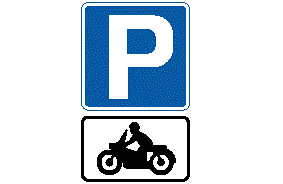
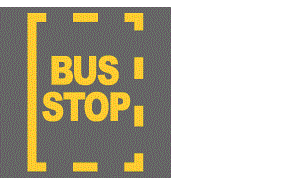

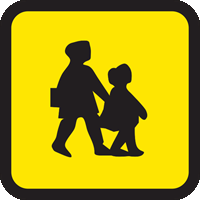

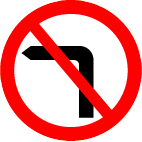
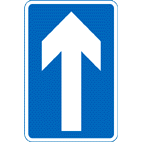
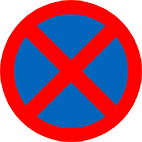
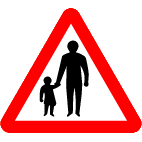
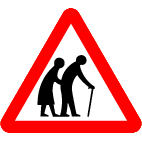
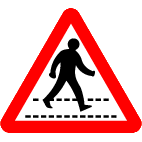
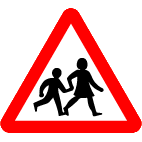

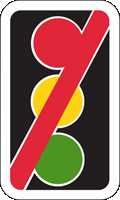
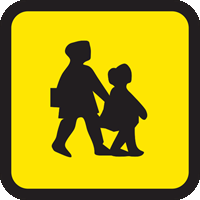
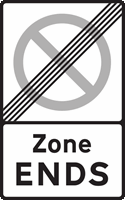
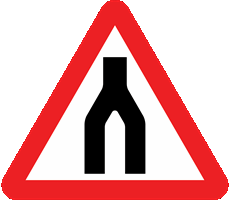
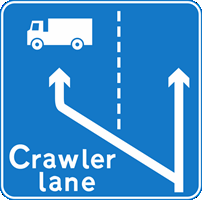

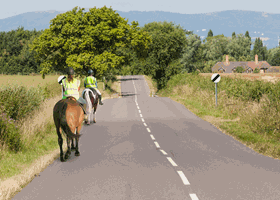
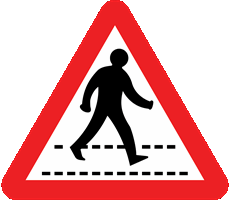














There are 7 comments
Is possible do the test in other languages??
Thanks